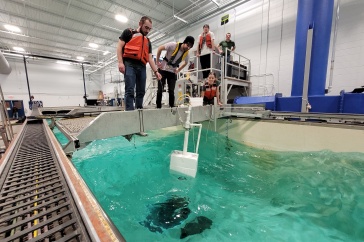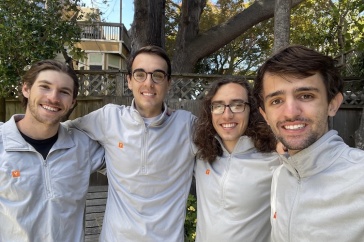
Paul College hosted the annual Digital Marketing Symposium on October 14, 2016, in the Memorial Union Building.
The Digital Marketing Symposium?recently hosted by the Paul College?department of marketing?brought an interesting mix of?industry experts to campus to speak about topics in digital marketing. Here are 10 takeaways.??
Marketing has changed?more?in the?past two years more than the?previous?75. ?
Digital marketing is moving the field forward quickly, said Andrew Wheeler ’02, a UNH alumnus who is now vice president of services for?Skyword, a content marketing firm in Boston. We can blame this, he said, on the accessibility of content from our devices and the ease of data collection from this content, making advances in the field easier.???
Users?on average?consume seven hours of digital content per day.?
That's another statistic from Wheeler. He?added that 4.7 hours of that content is consumed on mobile devices.?With all of this content consumption, there are ample opportunities to get your brand in front of customers through digital content.??
Most digital?display?ads?are?not?seen.?
Digital advertising is different than its predecessors, TV and radio advertising, because you’re paying for the opportunity to have consumers view your ad instead of the guarantee of it, said Jeff Greenfield, chief operating officer and cofounder of Boston-area firm C3 Metrics.?While TV viewers or radio listeners of the past were mostly a captive audience for advertising, now consumers have many types of content competing for their attention.?
TV advertising measurement?hasn’t changed much since the 1980s.?
While digital marketing is moving at a quick pace, TV advertising?has not advanced much, said?Greenfield.?It’s still not very easy to gauge the effectiveness of a TV commercial.??
Customers visit?websites?six times during a purchase.?
Marketing doesn’t end when you get a potential customer to visit your website, said Sean Waters,?digital marketing strategist for?PixelMEDIA.?Customers?visit?a company’s?website multiple times before making the decision?to buy a product.?
Millennials?don’t use social media to shop.?
But don’t think that it’s not important to market your products to them there, said members of L.L. Bean’s marketing team, Chuck Gannon, Alison Crowley?and Doug Kolmar. Millennials are still being influenced on social media, and those influencers play a big part in the products they choose to buy.??
There are 32 different device screen sizes.?
With this many different screen sizes for potential customers to view your content on, it’s imperative that your websites have responsive design, said Samantha?Maltais, principal strategist and marketing manager for?SilverTech, a marketing agency in Manchester.??
360 video makes users the video editor.?
Storytelling?through 360 video is difficult?because the?viewer, not the creator, makes the decisions about what they see, said UNH alumnus Adam Flaherty ’05, co-owner and executive producer at video production firm Anchor Line.?
Interested in learning more about digital marketing?
Two online sections will be offered during January term. Register by Dec. 23.
Users tend to delete emails that don’t look good on mobile.?
Responsive design is not just for websites, said Rich Brooks, president of?Flyte?New Media. It’s important to apply this approach to emails, too, to ensure they are read by your target audience.?
Emotional intelligence will be a big part of marketing’s future.?
Emotional intelligence is being used in new technology to gauge customer reaction and respond to customer emotions, said Paula David, director of business operations, sales?and human resources for the emotion?recognition software company?Affectiva.?The uses for this technology could be endless, ranging from?more thorough market research data?to products?that can interact with consumers.??
?
-
Written By:
Whittney Gould | Peter T. Paul College of Business and Economics | whittney.gould@unh.edu | 603-862-1704




















































